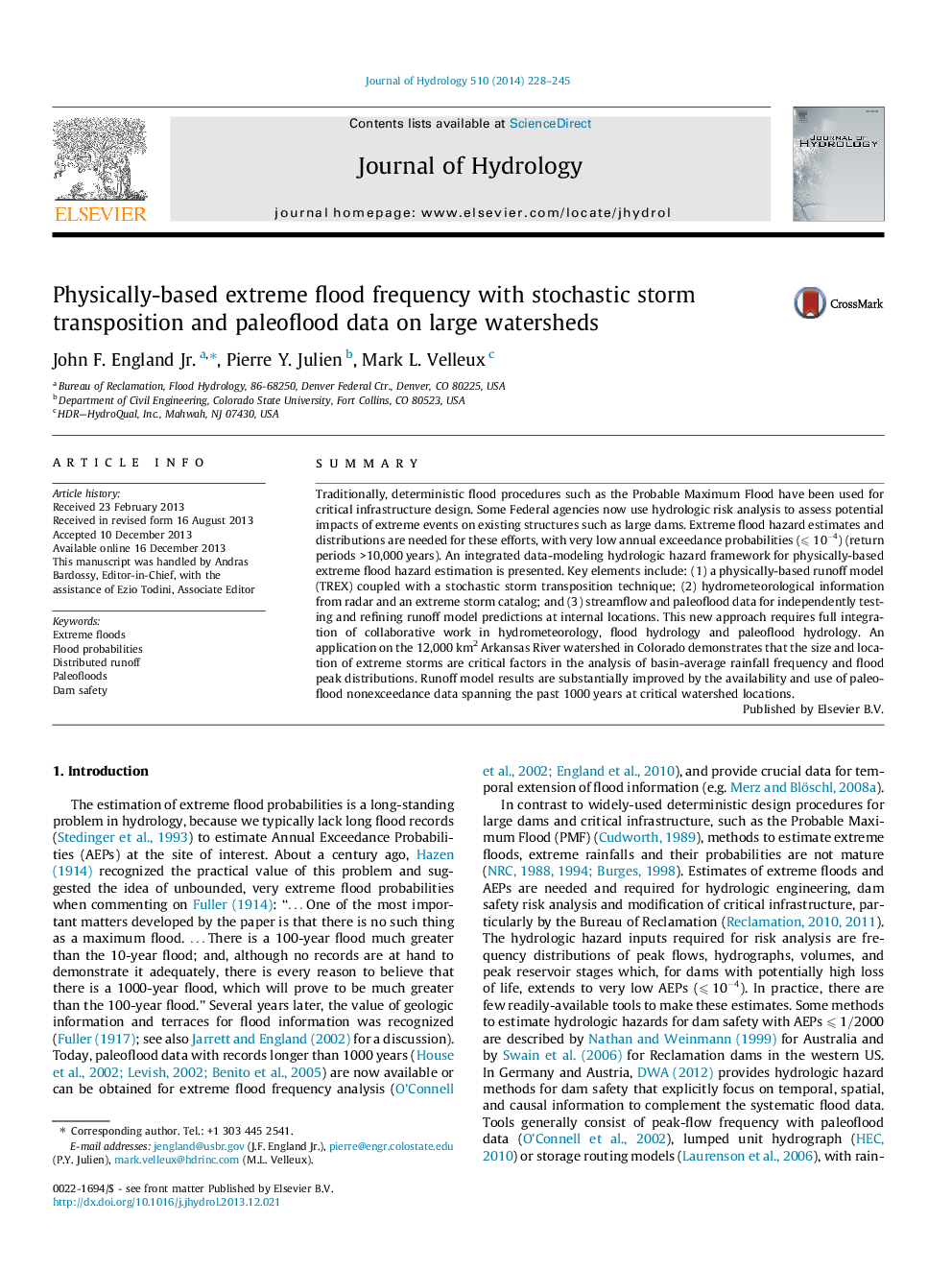| Article ID | Journal | Published Year | Pages | File Type |
|---|---|---|---|---|
| 6413196 | Journal of Hydrology | 2014 | 18 Pages |
â¢Multiple approach hydrologic hazard framework for critical infrastructure (dams).â¢Intergration of extreme storms, paleofloods and flood hazard information.â¢Risk-based flood hazard estimates with very low annual exceedance probabilities.
SummaryTraditionally, deterministic flood procedures such as the Probable Maximum Flood have been used for critical infrastructure design. Some Federal agencies now use hydrologic risk analysis to assess potential impacts of extreme events on existing structures such as large dams. Extreme flood hazard estimates and distributions are needed for these efforts, with very low annual exceedance probabilities (⩽10-4) (return periods >10,000 years). An integrated data-modeling hydrologic hazard framework for physically-based extreme flood hazard estimation is presented. Key elements include: (1) a physically-based runoff model (TREX) coupled with a stochastic storm transposition technique; (2) hydrometeorological information from radar and an extreme storm catalog; and (3) streamflow and paleoflood data for independently testing and refining runoff model predictions at internal locations. This new approach requires full integration of collaborative work in hydrometeorology, flood hydrology and paleoflood hydrology. An application on the 12,000 km2 Arkansas River watershed in Colorado demonstrates that the size and location of extreme storms are critical factors in the analysis of basin-average rainfall frequency and flood peak distributions. Runoff model results are substantially improved by the availability and use of paleoflood nonexceedance data spanning the past 1000 years at critical watershed locations.
